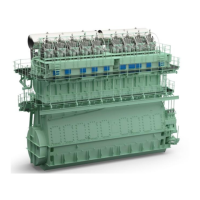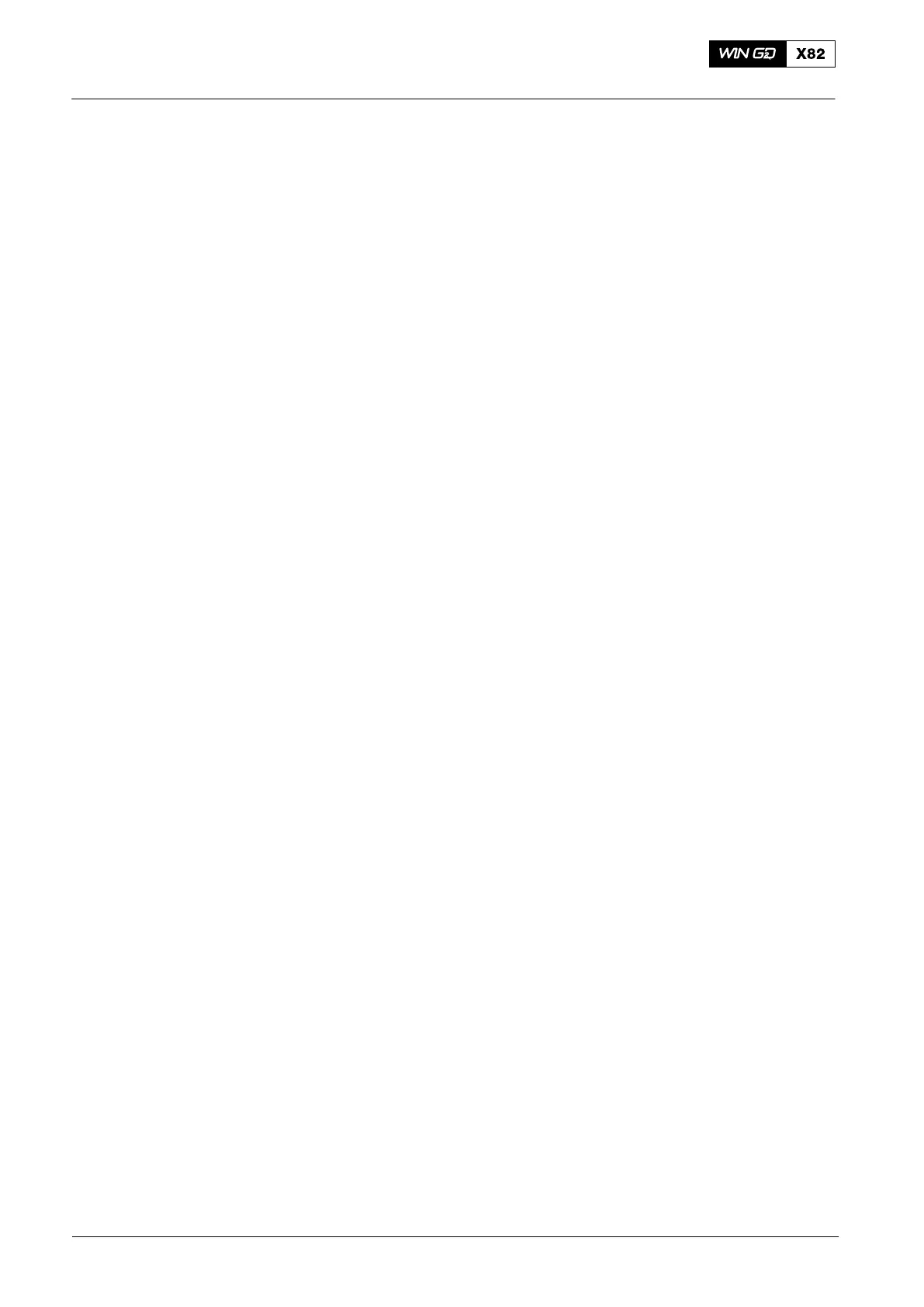Operation8016−1/A2
Winterthur Gas & Diesel Ltd.
2/ 13
2. Bearing and Turbocharger Oil System / Lubricating Oil
System
Bearing oil is supplied through the inlet pipe (4, Fig. 1) on the exhaust side to the oil
supply pipe (6) and main bearings (8) through bores in the bearing covers.
Bearing oil is also used to cool the pistons through the supply pipe (5) to the toggle
levers (13), to lubricate the crosshead pins (12) and the bottom end bearings.
Oil flows through the servo oil system to the exhaust valve control units to operate the
exhaust valves (see paragraph 4 and 4003−2 Control Diagram).
The built-in axial damper (7), and if installed, the vibration damper (27), intermediate
wheels (19) and (20) and the drive supply unit are supplied and cooled with bearing
oil.
There is an oil supply through the supply pipe (16) for the bearings, nozzles, fuel
pumps and internal bores in the fuel pump unit (17) (for more data, see 5581−1 Fuel
Pump Unit and 5556−1 Fuel Pump).
Oil flows through internal bores and nozzles in the servo pump unit (18) to the
bearings and the gear wheels (see 5591−1 Servo Pump Unit).
Bearing oil flows through oil inlet pipe (4) and the oil inlet pipe (29) to the
turbochargers (30). The oil flows back through the vent unit (31) to the outlet pipe (32)
(which has an air separator) to the oil drain tank (OD).
You use the ball valves (37) and (38) to get dirty oil samples from the piston
underside (see also 0750−1, paragraph 3 Cylinder lubricating oil).
Note: During operation, the ball valves (37) are open and the ball valves (38) are
closed.
Lubricating Oil System 9-cylinders
2014

